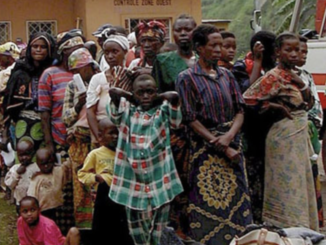In Part One we followed the journey of Irishman Charles Freeman, on the SS Medic down the west coast of Africa, from Liverpool to Cape Town in 1927. The ship was continuing on to Australia, but he stayed on in Cape Town for a few days, waiting for a different boat.
In Part One there was a photo of the view from Freeman’s hotel room.
I couldn’t locate the street, but must take my hat off to Always Worth Saying, as his superior detective skills came into play and he found it. 134 Plein Street, Cape Town.
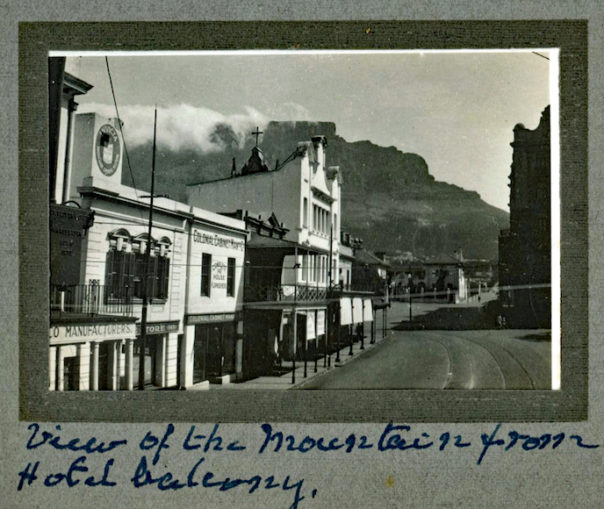
It turns out that all these buildings were levelled in 1984, and turned into a car park for the nearby South African Parliament.
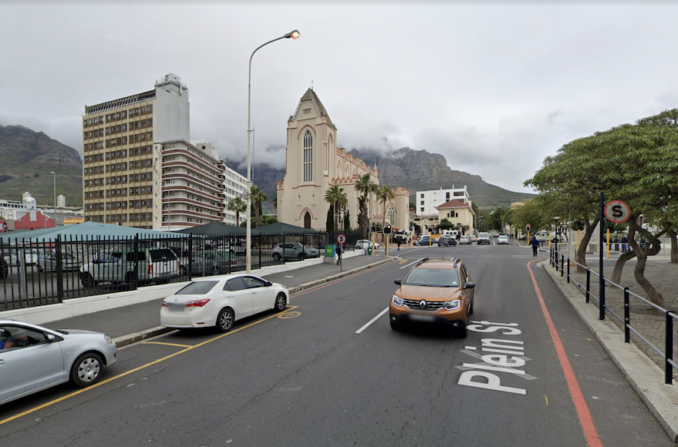
© Google Street View 2023, Google.com
But back to our trip. The Dutch ship “Rijperkerk” was the vessel for the next leg of the journey. A big thank you to Upset for deciphering that name from a scribble.
Rijperkerk was a 5,875 ton freighter, with some passenger cabins, built by Furness, Withy & Company, at West Hartlepool in 1907. Originally named Celebes, and owned by Dutch shipping line, NV Stoomvaart, she was seized by US authorities in 1918 while docked in Virginia. How was such a thing possible?
Well in March of that year Woodrow Wilson had issued a presidential proclamation allowing any Dutch ships in US waters to be taken over and used by the US Navy. Just like that.
Whereas, the law and practice of nations accords to a belligerent power the right in time of military exigency and for purposes essential to the prosecution of war, to take over and utilize neutral vessels lying within its jurisdiction:
And Whereas the Act of Congress of June 15, 1917, entitled, “An Act making appropriations to supply urgent deficiencies in appropriations for the Military and Naval Establishments on account of war expenses for the fiscal year ending June thirtieth, nineteen hundred and seventeen, and for other purposes,” confers upon the President power to take over the possession of any vessel within the jurisdiction of the United States for use or operation by the United States:
Now Therefore I, Woodrow Wilson, President of the United States of America, in accordance with international law and practice, and by virtue of the Act of Congress aforesaid, and as Commander-in-Chief of the Army and Navy of the United States, do hereby find and proclaim that the imperative military needs of the United States require the immediate utilization of vessels of Netherlands registry, now lying within the territorial waters of the United States; and I do therefore authorize and empower the Secretary of the Navy to take over on behalf of the United States the possession of and to employ all such vessels of Netherlands registry as may be necessary for essential purposes connected with the prosecution of the war against the Imperial German Government. The vessels shall be manned, equipped and operated by the Navy Department and the United States Shipping Board, as may be deemed expedient; and the United States Shipping Board shall make to the owners thereof full compensation, in accordance with the principles of international law.
Soon transferred to the U.S. Navy, she was placed in commission as USS Celebes in April and assigned to the Naval Overseas Transportation Service. During the rest of the war and the three months following the 11 November 1918 Armistice, the ship operated between New York and ports in Western France. In March 1919 Celebes began her final Navy voyage, from New York to Amsterdam, and early in May was decommissioned and returned to her Dutch owners.

Celebes/Rijperkerk,
Unknown photographer – Public domain CC BY-SA 2.0
NV Stoomvaart sold the ship in 1926 to another Dutch concern, NV Vereenigde Nederlandsche Scheepvaart, who renamed it as the Rijperkerk, and placed it in service with the Holland Suid Afrika Lijn. They had fifteen ships in constant rotation around Africa, some in a clockwise direction and some anti-clockwise. Rijperkerk was one of the anti-clockwise ships, leaving Europe and going directly down the west coast of Africa to Cape Town, and then returning via the east coast and the Suez Canal. Its stops were: Hamburg, Antwerp, Amsterdam, Rotterdam, Cape Town, Durban, Lourenço Marques, Beira, Mikindani, Lindi, Dar-es-Salaam, Zanzibar, Tanga, Mombasa, Port Sudan, Port Said, Genoa, Marseilles, Antwerp, Rotterdam, and back to Hamburg to do it all again.

Holland-Afrika Lijn,
Unknown photographer – Public domain CC BY-SA 2.0
So our Mr. Freeman boarded the ship in Cape Town, but must have been conserving his rolls of film, as he doesn’t seem to have taken his camera out for a while. I’m sure the social life on deck was a little less lively than the SS Medic.
I had no idea where to place this photo of him riding in a rickshaw, as there’s no caption.
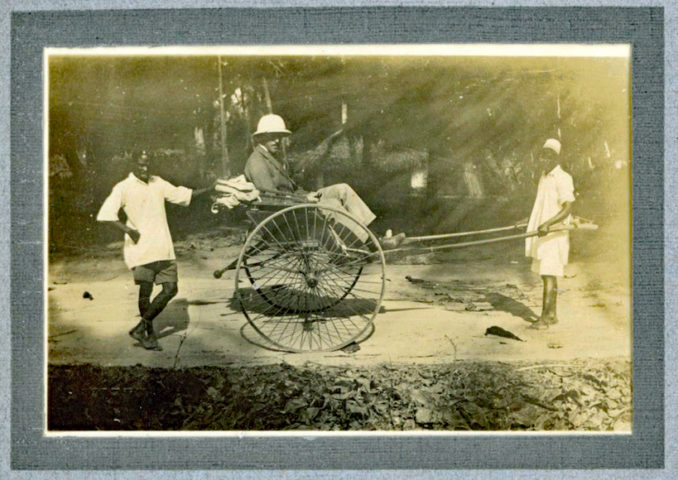
Searching for old photos of Mozambique online though, I stumbled across this postcard. Probably staged and apparently dating from around 1910, it looks to be almost exactly the same rickshaw, and the chaps pulling it are dressed the same, so I’m asserting that this is Lourenço Marques, the then capital city of Portuguese Mozambique, and now renamed Maputo.

A mid-day nap, Lourenço Marques,
Unknown photographer – Public domain CC BY-SA 2.0
Google Streetview is in its infancy in Mozambique, and in most cases it doesn’t really exist at all, but from what I could see of Maputo, it does look a bit like this, but with lots more people, lots of litter everywhere, and a general air of squalor.
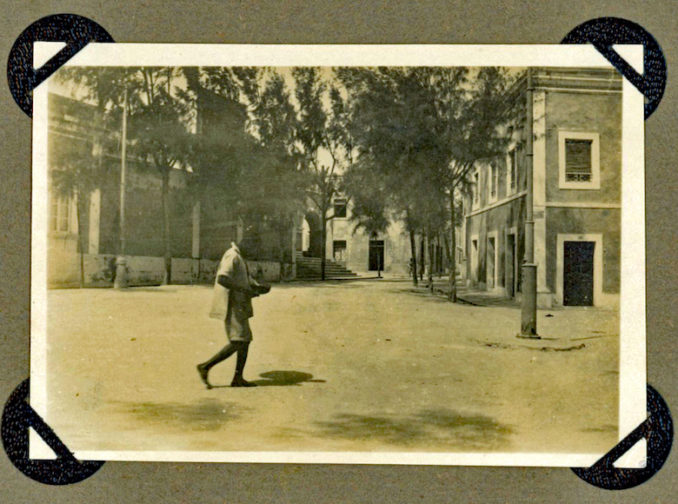
© Maximum Overdrive 2023, Going Postal
Rejoining the ship, they had two days at sea to travel the 525 nautical miles up the coast to the port of Beira. Quite a busy seaport then, Beira was a main transportation hub for landlocked Southern Rhodesia, and we see three ships at anchor in the bay.

Any cargo for Beira must have been transferred to smaller boats and brought ashore, although these days the city has a large container port. In 1927 there were hand trucks on rails running through the streets.
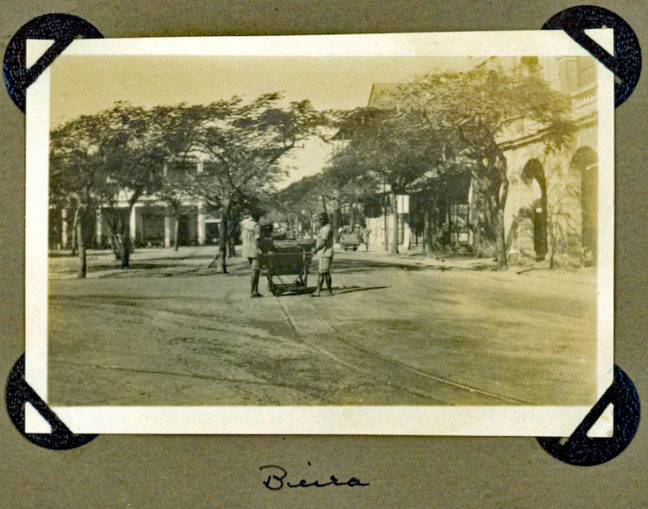
Today Beira is probably best known for the huge and crumbling Grande Hotel.
Built in the early 1950s in an Art Deco style, the hotel was basically far too upmarket for a sleepy African city, and it closed after twenty years where it never made a profit. It remained closed for several years until Mozambique got independence from Portugal in 1975, and then it was used for socialist party meetings, while the basement was turned into a prison for political opponents.
Today the hotel is more or less a huge squat, with thousands living in it without electricity or running water. You can read all about it here.
Could be a metaphor for the whole country, or perhaps the whole continent?
Too harsh?
Dar es Salaam, now the largest city in Tanzania, is four days sailing north from Beira, although stops at Mikindani and Lindi will have added a day or two to that. Mikindani and Lindi are a mere 25 miles apart, so why the ship had scheduled stops at both is a bit of a mystery. After the uninterrupted trip from Rotterdam to Cape Town, Holland Suid Afrika Lijn really did turn into a local service up the east coast of Africa.
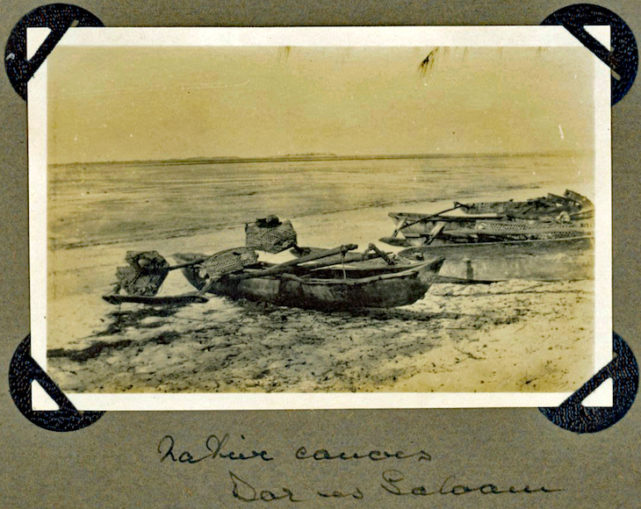
© Maximum Overdrive 2023, Going Postal
Native canoes are pictured on the beach at Dar es Salaam, with perhaps a hint of a palm tree in the top of the frame, but our next photo is on a much larger vessel.
The Chief Engineer and Chief Officer of the Rijperkerk, along with a man called Alfke, on the deck of a wrecked ship.
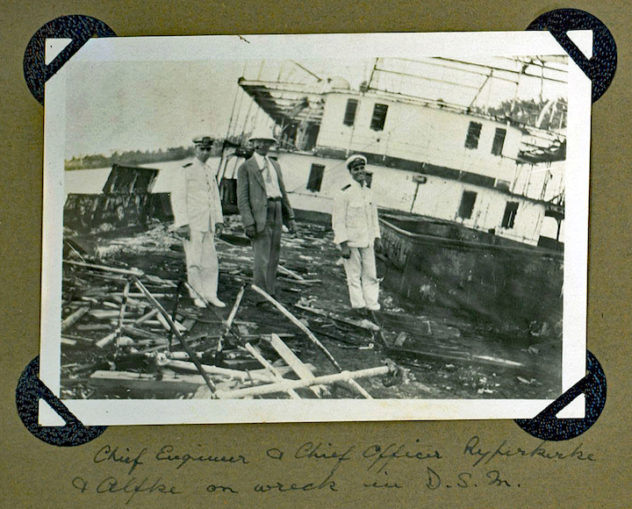
Tanganyika had of course been a German colony up until the Treaty of Versailles, when Germany was stripped of all its foreign possessions. There were some fierce battles between British and German forces in the area, both on land and on sea.
This shipwreck they’re standing on is the SS Koenig, a German freighter that was scuttled by her crew in 1916 to try and block access to the port of Dar es Salaam.

The S.S. “Koenig”,
Unknown photographer – Public domain CC BY-SA 2.0
Not to be confused with the SMS Königsberg, a German navy ship which was sunk by the Royal Navy in 1915, at the mouth of the Rufiji river, 100 miles south of Dar es Salaam. That’s an interesting story in itself …
Fifty miles distant is Zanzibar, the next port of call for the Rijperkerk. Large skiffs have pulled up alongside the ship, with several swimmers bobbing in the water.
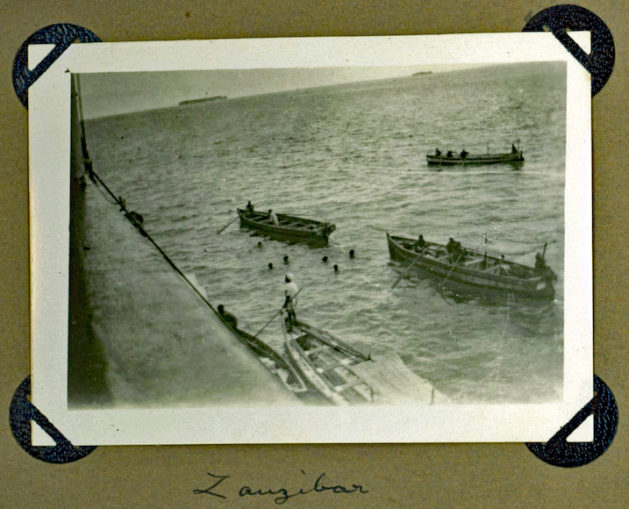
And that’s the last we see from the Rijperkerk, although Freeman didn’t end his journey in Zanzibar. We’ll have to assume he disembarked at Tanga, the next port of call, or at Mombasa in Kenya, for in the next photos he is far inland.
Ifunda. That’s where he ends up, a little village in the middle of nowhere, just 30 miles south of the town of Iringa, Tanganyika, which if you remember, was the starting point for “The Sore Seated Safari”, the start of his journey home in 1929.
Going ashore at Dar es Salaam would seem to have been a much more logical route, but perhaps there were meetings and contracts to be signed in Kenya, before an overland trip to Ifunda. For what he was doing was setting up and managing a farm.
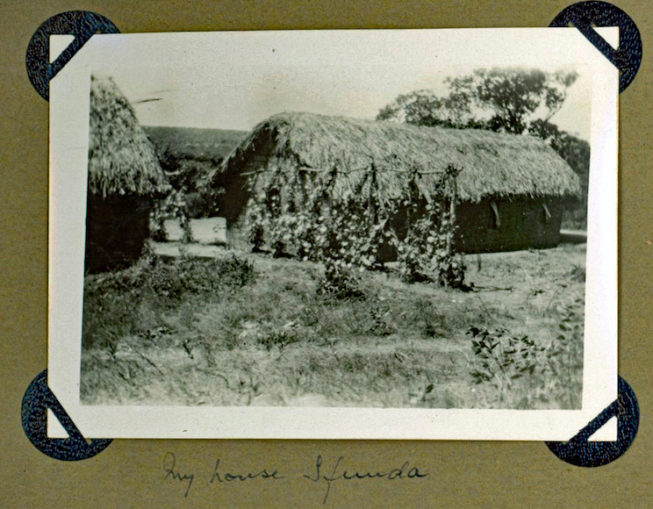
© Maximum Overdrive 2023, Going Postal

© Maximum Overdrive 2023, Going Postal
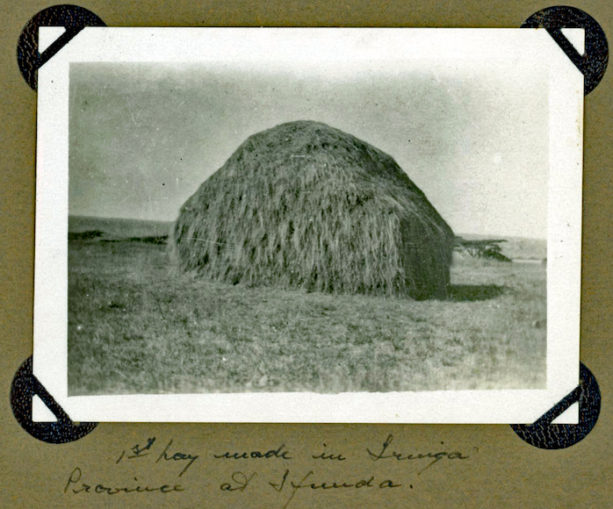
© Maximum Overdrive 2023, Going Postal
Apart from hay, there’s little reference to what sort of farming was going on, apart from a mention of a calf being killed by a leopard. Indeed, the only thing that seemed worth photographing were frequent intrusions by leopards and lions.
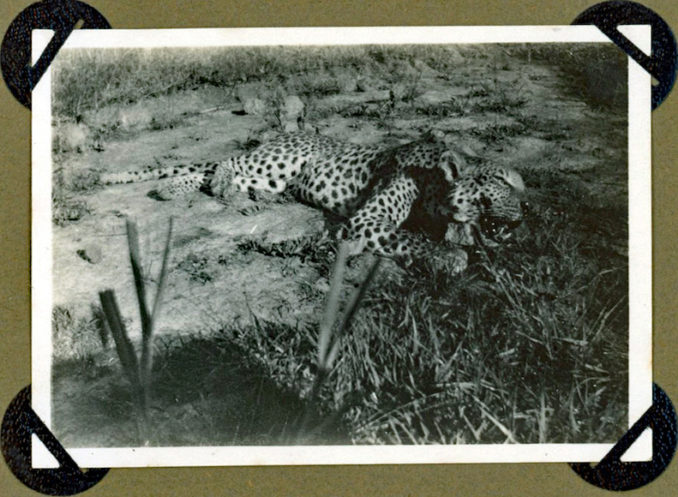
© Maximum Overdrive 2023, Going Postal
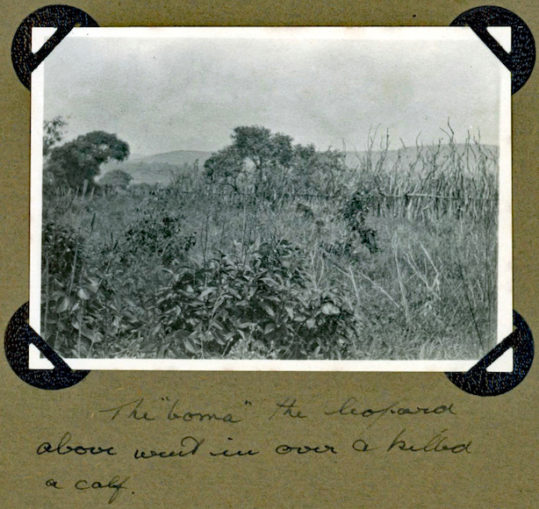
© Maximum Overdrive 2023, Going Postal

© Maximum Overdrive 2023, Going Postal
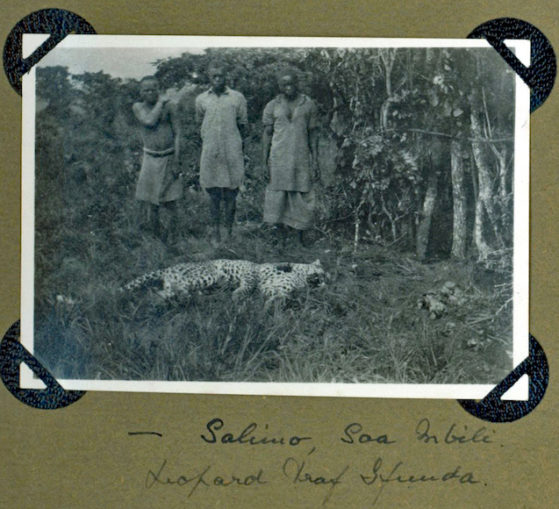
© Maximum Overdrive 2023, Going Postal
There were other Europeans around, either working in the farming venture, or perhaps in the town of Iringa, so there was a bit of a social life. Here we see Charles Freeman, Miss Chamberlain, Mrs Grant, Piet Grobler and Major Grant having a picnic in the bush. Mrs Grant appears to be wearing a shirt and tie.
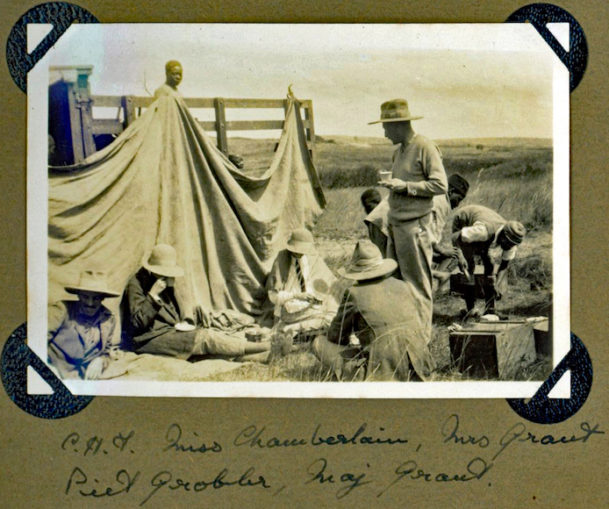
This was all 95 years ago, but how different the world was. These people were a bit like pioneers settling the American West. But within 30 to 40 years the dream crumbled. Now Africa comes to you. And you’d be ridiculed for wearing a tie to a picnic, or just about anywhere.
© Maximum Overdrive 2023


